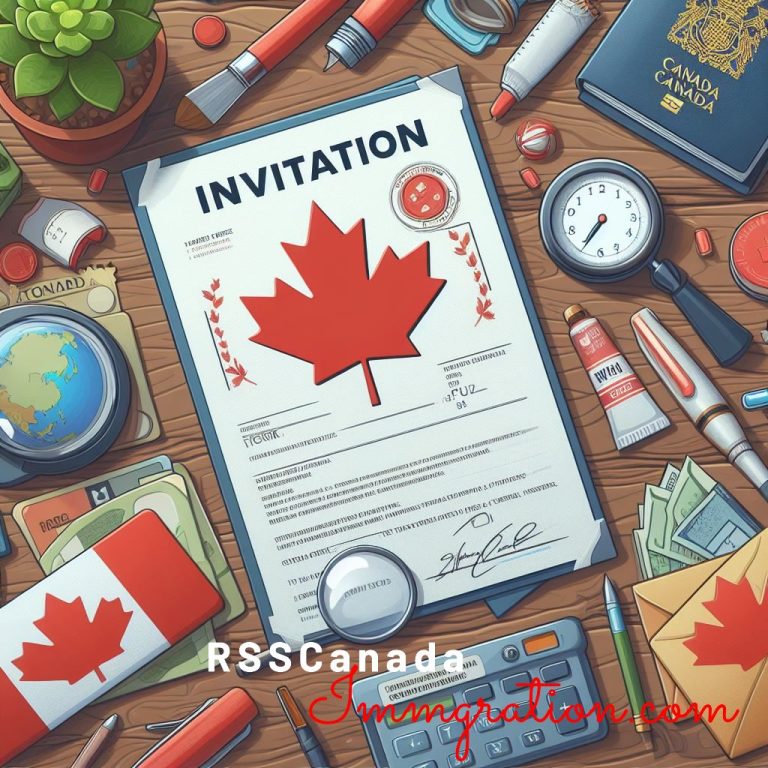Understanding Canada’s Express Entry System
Canada’s Express Entry system is an efficient and streamlined application management system for individuals interested in immigrating to Canada. It encompasses three immigration programs: the Federal Skilled Worker Program (FSWP), Canadian Experience Class (CEC), and Federal Skilled Trades Program (FSTP). To successfully apply for permanent residence in Canada through Express Entry, candidates must meet specific criteria and go through a standardized process. This article provides an overview of the Express Entry system, including eligibility requirements, the application process, and the different programs available.
Overview of Express Entry
Express Entry is an electronic system that manages the applications of skilled workers who wish to become permanent residents of Canada. It operates through an online profile submission process, where candidates provide information regarding their age, education, work experience, language skills, and other factors. Based on this information, candidates are assigned a Comprehensive Ranking System (CRS) score, which ranks them against other applicants in the Express Entry pool.
Eligible candidates with the highest CRS scores may receive an Invitation to Apply (ITA) for permanent residence. The CRS score is determined based on factors such as age, education, language proficiency, work experience, and additional selection criteria established by the Canadian government.
Eligibility and Criteria
To be eligible for Express Entry, candidates must meet specific criteria established by the Canadian government. These criteria vary depending on the program under which they are applying, whether it’s the FSWP, CEC, or FSTP. In general, candidates must have the following criteria.
- Relevant work experience
- Meet language proficiency requirements in either English or French
- Possess sufficient settlement funds
- And fulfill any additional requirements outlined by the program.
Candidates can assess their eligibility by referring to the official government website and completing a questionnaire that takes into account factors such as nationality, age, language skills, education, work experience, and family details. The CRS calculator then generates a specific score based on the information provided.
Express Entry Process and Draws
The Express Entry process comprises two major stages:
- Profile submission and invitation rounds, also known as “draws.”
- Candidates start by creating an Express Entry profile, where they enter their personal information, work experience, educational background, language proficiency, and other relevant details.
- The profiles remain in the Express Entry pool for up to 12 months from the date of submission.
The Canadian government conducts regular draws to select candidates with the highest CRS scores from the pool. Those selected receive an Invitation to Apply (ITA) for permanent residence.
Once an ITA is received, candidates have 60 days to submit a complete application for permanent residence, including the necessary supporting documents.
It is important to note that Express Entry draws are competitive, and the minimum CRS score required for selection varies with each draw. With each subsequent draw, candidates with higher scores are more likely to receive an ITA.
Navigating Express Entry Application
Navigating the Express Entry application process involves understanding the required documents and profiles, as well as being familiar with the invitations to apply (ITA) and the application for permanent residence.
Required Documents and Profiles
To apply for Express Entry, candidates need to gather various supporting documents. These may include
- A valid passport or travel document
- Language test results
- An Education Credential Assessment (ECA) report
- Job offer letters (if applicable)
- Police certificates
- Medical examination reports
- Proof of settlement funds, and other relevant documents.
Candidates must create an Express Entry profile on the official Government of Canada website. The profile contains detailed information about the candidate’s background, education, work experience, language proficiency, and other relevant details. It is essential to provide accurate and up-to-date information in the profile, as any discrepancies may affect the application process.
Invitations to Apply (ITA)
- After creating an Express Entry profile, candidates may receive an Invitation to Apply (ITA) if they meet the minimum CRS score requirements in a subsequent draw.
- The ITA gives candidates an opportunity to apply for permanent residence in Canada.
- Candidates who receive an ITA must accept the invitation and complete the application process within the specified timeframe, typically 60 days.
- Receiving an ITA does not guarantee permanent residence, as candidates must still meet the eligibility requirements and submit a complete application with all the necessary supporting documents.
- However, an ITA signifies a significant step forward in the application process.
Application for Permanent Residence
- Once an ITA is received, candidates must complete the application for permanent residence.
- This involves submitting the required forms and supporting documents to the Government of Canada within the specified timeframe.
- The application will undergo multiple stages, including completeness checks, evaluation of eligibility, review of medical results, background checks, and final decision.
- It is crucial to ensure that all forms are completed accurately and that all supporting documents are provided as required.
- Insufficient or incorrect information could lead to the application being postponed or denied.
- Candidates should also be prepared to pay the applicable fees associated with the application process.
Express Entry Program Types and Requirements
The Express Entry system comprises several program types, each with its own eligibility requirements. These program types include
- The Federal Skilled Worker Program (FSWP)
- Canadian Experience Class (CEC)
- Provincial Nominee Program (PNP).
Federal Skilled Worker Program (FSWP)
The Federal Skilled Worker Program (FSWP) is designed for skilled workers with foreign work experience who wish to immigrate to Canada. To qualify for the FSWP, candidates must demonstrate a high level of language proficiency in English or French, possess the necessary education qualifications, and meet specific work experience requirements. The FSWP targets individuals with skills that are in high demand in the Canadian labor market.
Canadian Experience Class (CEC)
The Canadian Experience Class (CEC) is open to individuals who have gained work experience in Canada. To be eligible for the CEC, candidates must have at least one year of Canadian work experience in a skilled occupation within the last three years. They must also meet the required language proficiency levels in either English or French and fulfill other criteria outlined by the Canadian government.
Provincial Nominee Program (PNP)
The Provincial Nominee Program (PNP) allows provinces and territories within Canada to nominate skilled workers who meet their specific labor market needs. Each province or territory has its own set of eligibility requirements and selection criteria. Candidates interested in the PNP must fulfill the criteria set by the province they wish to live and work in.
It is essential for candidates to thoroughly research and understand the requirements of each program before deciding which one to apply under. By choosing the program that aligns with their qualifications and goals, candidates can increase their chances of a successful application.
Enhancing Your Express Entry Profile
To maximize the chances of receiving an Invitation to Apply (ITA) and ultimately obtaining permanent residence through Express Entry, candidates can take steps to enhance their profile and improve their Comprehensive Ranking System (CRS) score.
Strategies for Improving CRS Score
Candidates can adopt various strategies to improve their CRS score. Some effective strategies include:
Language Proficiency: Obtaining higher scores in language proficiency tests, such as the International English Language Testing System (IELTS) or Canadian English Language Proficiency Index Program (CELPIP), can significantly boost the CRS score.
Education Credentials: Acquiring additional educational qualifications, such as diploma programs, certifications, or further academic degrees, can enhance the CRS score.
Work Experience: Gaining additional work experience in a skilled occupation, particularly in Canada, can increase the CRS score.
Job Offers: Securing a valid job offer from a Canadian employer that meets specific criteria can result in additional CRS points.
Provincial Nomination: Obtaining a nomination from a Canadian province or territory through the Provincial Nominee Program (PNP) can provide a significant boost to the CRS score.
Maximizing Points Potential
Candidates should strive to maximize their points potential in each of the CRS categories, including
- Human capital factors
- Skill transferability
- Domestic work experience, and additional points.
By carefully assessing the scoring system and strategically aligning their qualifications with the established criteria, candidates can increase their overall CRS score.
Pros and Cons of Express Entry
While Express Entry offers several advantages for skilled workers seeking to immigrate to Canada, it is essential to consider the pros and cons before applying. Some of the benefits of Express Entry include:
Efficient Processing Times: Express Entry is known for its relatively fast processing times compared to the previous immigration system.
Points-Based System: The Comprehensive Ranking System (CRS) allows candidates to understand their chances of receiving an ITA and provides an opportunity to improve their scores.
Job Market Integration: Express Entry aligns with the Canadian labor market needs, increasing the chances of finding employment upon arrival.
However, it is important to note that Express Entry also has potential challenges, including:
Competitive Selection: The CRS score requirement for receiving an ITA can vary with each draw, making the selection process highly competitive.
Program Specific Requirements: Each Express Entry program, such as FSWP, CEC, or PNP, has its own specific criteria and requirements that candidates must fulfill.
Relocation and Settlement: Candidates must be prepared for the challenges of relocating to Canada, including finding suitable housing, adapting to a new culture, and establishing a new life.
Candidates should carefully evaluate their individual circumstances and assess whether Express Entry aligns with their goals and aspirations.
How much does Express Entry cost?
The cost of applying through the Express Entry system includes several components. The main fees involved are as follows:
Government fees: The government fees for the main applicant typically range from $1,325 to $1,575 CAD. This fee covers the processing of the application.
Biometrics fee: Candidates may be required to provide biometrics, which include fingerprints and a photo. The biometrics fee is $85 CAD per person or $170 CAD for a family.
Language test fee: Candidates are required to take a language test to demonstrate their proficiency in English or French. The fees for language tests vary depending on the test provider.
Education credential assessment fee: Candidates with foreign education credentials may need to obtain an education credential assessment (ECA). The fees for ECA vary depending on the designated organizations.
It is important to note that fees are subject to change, and candidates should refer to the official government websites for the most up-to-date information.
In conclusion, while there are costs associated with the Express Entry program, the potential benefits and opportunities for skilled workers to immigrate to Canada make it an attractive option for those seeking permanent residency.
Conclusion
Canada’s Express Entry system is a reliable avenue for skilled workers looking to immigrate and obtain permanent residence in Canada. By understanding the system’s requirements, eligibility criteria, and application process, individuals can navigate the Express Entry system successfully. Improving one’s CRS score and considering the different Express Entry programs available can enhance the chances of receiving an Invitation to Apply (ITA) and ultimately achieving the goal of becoming a permanent resident of Canada.
However, it is crucial for candidates to thoroughly research and understand the requirements of each program and carefully consider their individual circumstances before making any decisions.
FAQs
What is the Express Entry Immigration System?
The Express Entry Immigration System is an online application management system used by the Canadian government to manage applications for immigration under the Federal Skilled Worker Program, Federal Skilled Trades Program, and Canadian Experience Class.
Who is eligible to apply through Express Entry?
Eligibility for Express Entry is determined by meeting the requirements of one of the federal economic immigration programs mentioned earlier. Additionally, candidates must meet the eligibility criteria for at least one of the programs and be eligible to create an Express Entry profile.
How does the Express Entry system work?
The Comprehensive Ranking System (CRS) is utilized by Express Entry, which is a points-based system. This system ranks candidates according to various factors, including age, education, work experience, language proficiency, and other qualifying criteria. The Canadian government regularly conducts draws to invite the highest-ranking candidates to apply for permanent residency.
What is a CRS score?
A CRS score is a Comprehensive Ranking System score, which determines a candidate’s ranking in the Express Entry pool. The score is based on various factors like age, education, work experience, language skills, and other factors. Higher CRS scores increase the chances of receiving an invitation to apply for permanent residency.
How often are Express Entry draws conducted?
Express Entry draws are typically conducted every two weeks by the Canadian government. The number of invitations issued and the minimum CRS score required vary from draw to draw, depending on the government’s immigration targets and the number of eligible candidates in the Express Entry pool.
Can an Express Entry profile be updated after submission?
Yes, candidates can update their Express Entry profiles after submission. It is important to keep the profile up to date with accurate information, such as work experience, education, language test results, and other details. Updating the profile can help improve the CRS score and increase the chances of receiving an invitation.
Can I include my spouse or common-law partner in my Express Entry application?
If you receive an invitation to apply for permanent residency, you will have a limited time (usually 60 days) to submit a complete application along with supporting documents and pay the required fees. The application will be assessed by the Canadian government, and if approved, you will receive confirmation of your permanent residency status.
Is there a cap or quota on the number of applicants accepted through Express Entry?
No, there is no specific cap or quota on the number of applicants accepted through Express Entry. The system is designed to be flexible and allows the Canadian government to issue invitations based on the needs of the country’s labor market and economic priorities.
How long does it take to get permanent residency through Express Entry?
The processing time for permanent residency applications through Express Entry can vary depending on various factors, such as the current application volume, completeness of the application, and the complexity of the case. On average, it can take around six months or more from the date of submission to receive a decision on the application.




